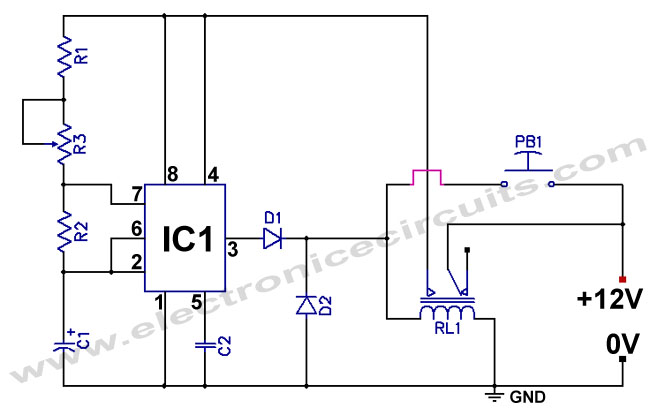Hi, I would like to modifie this "555 Low power Consumption Timer Circuit":

The problem is that I have push button already installed in a car and one side of it is connected to the ground.
Is it possible to adjust schematics to that button?
would this work and consume 0 power when off? Also wont Diods burn?
Any other ideas for such button placement and power consumption that would be 0 on idle?

The problem is that I have push button already installed in a car and one side of it is connected to the ground.
Is it possible to adjust schematics to that button?
would this work and consume 0 power when off? Also wont Diods burn?
Any other ideas for such button placement and power consumption that would be 0 on idle?
Last edited:

